Behind the Butte: The Hidden Charms of Montmartre’s North Side
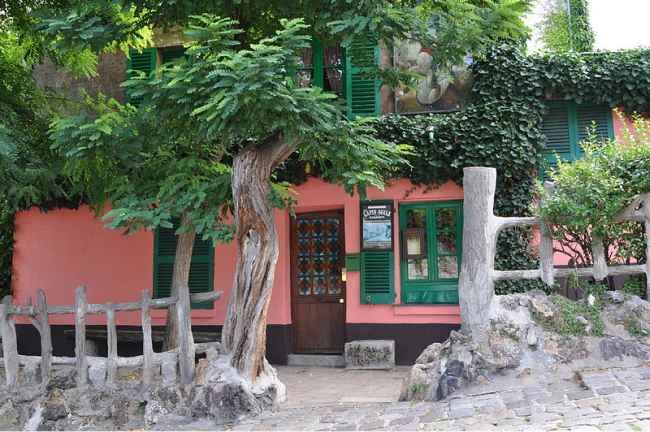

On any day in summer, the steps below Sacré-Coeur will be thronged with tourists speaking every language under the sun. But walk to the far side of the hill, where it’s possible to hear birdsong and children playing in school yards, to discover a tiny cemetery where some of France’s leading artistic figures reside, and a spot where Paris’s most famous martyr stopped.
While the southern side of the Butte Montmartre became famous for its cafés and cabarets, the northern slope remained a tangle of ramshackle houses and allotment gardens. In the 1880s the steep slope was cleared to make way for redevelopment. Except that the redevelopment never happened. Instead, a shanty town of makeshift huts sprang up, cobbled together from scrap timber and iron, known as the Maquis.

The maquis de Montmartre in 1890. Public domain
Inevitably, squatters moved in: immigrants, unemployed artisans, beggars, anarchists and, of course, impoverished artists. In 1906, Modigliani, newly-arrived in Paris, moved into a vacant shack behind Rue Norvins. The Maquis was also a hotbed of crime, and prostitution, handling stolen goods and even murder flourished where the city police dared not venture.

The Maquis de Montmartre, vintage postcard, 1907
The Maquis lasted a good 40 years. Over time, the shacks acquired an air of semi-permanence. Old photographs show rickety wooden stairs and verandas; buddleia and briar roses gave the impression of a semi-rural haven. Eventually, the Maquis was cleared for the second time and it was built over in the 1920s and 30s. Nothing remains now except a few sepia photographs.
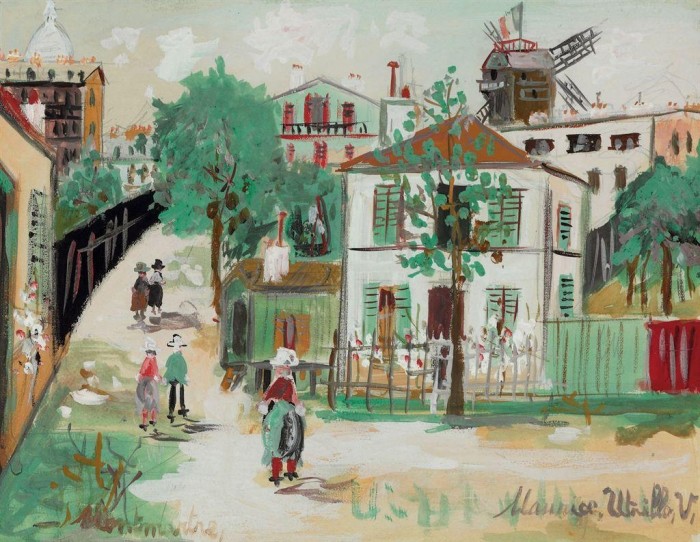
“Le maquis de Montmartre” by Maurice Utrillo
But this side of the Butte still repays a stroll. A good place to start is behind Sacré-Coeur itself, where a quiet garden hides a shady pergola and seating that is popular with locals eating their lunch.
At the far end of the garden, the street drops away into Rue Saint Vincent which runs alongside a deliberately “wild” garden and the Clos Montmartre. The Romans introduced vines to Paris but this vineyard dates from the 1930s, when the Société du Vieux Montmartre bought the plot to save it from real estate development. The wine is actually made in the basement of the mairie of the 18th arrondissement. It’s not great quality but the vendange provides a good excuse for a wine festival in October. Occasionally the vineyard is opened for tours.
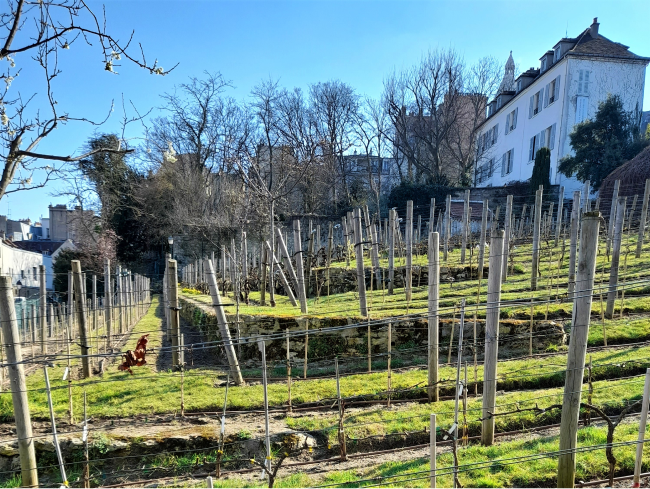
The vineyard of Clos Montmartre. © Pat Hallam
Across the road, the Lapin Agile looks scarcely different than it did 120 years ago. It’s named after the sign writer: André (A) Gill, hence Agile, pronounced A-zheel. It was a popular artists’ hangout and once, the manager commissioned a painting from a young unknown called Picasso to pay off his bar bill (you hope the manager held on to it). The tradition for audience sing-alongs continues to this day. It’s cheesy for sure, but still popular with Parisians as well as tourists.

Au Lapin Agile. © Pat Hallam
The high wall opposite conceals the pocket-sized Cimétière Saint-Vincent, which may not have the star power of the Cimétière de Montmartre but has its own Parisian icons. Among them are the graves of two Marcels: Aymé, who wrote novels and short stories in the early 20th century, and Carné, the “poetic realism” film director famous for Hôtel du Nord and Les Enfants du Paradis. Also buried here is Maurice Utrillo, the illegitimate son of painter/model Suzanne Valadon. Despite mental illness and alcoholism, Utrillo carved out his own niche, painting Montmartre street scenes which now are a precious record of the area.
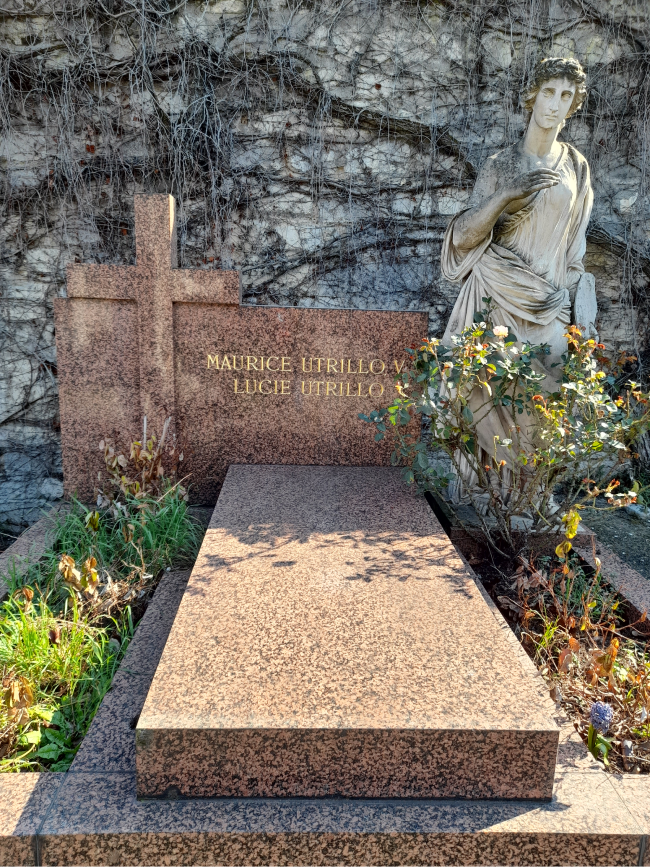
Maurice Utrillo’s headstone at St Vincent Cemetery in Paris. © Pat Hallam
Here you will also find the final resting place of Eugène Boudin, painter of Normandy seaside landscapes, a forerunner of Impressionism and mentor to his much more famous protégé, Claude Monet. The most recent grave belongs to Michou (real name Michel Catty), a Montmartre legend who ran his eponymous crossdressing cabaret in Rue des Martyrs for more than 60 years before passing away in 2020 (the cabaret is still going).

Michou’s headstone at St Vincent Cemetery in Paris. © Pat Hallam
Curving round the back of the cemetery, Avenue Junot is a gem of a street and quite untypical of Montmartre. That’s because it’s a lot newer: barely a hundred years old, in fact. Avenue Junot was the reason the Maquis was finally cleared, to be replaced by desirable houses and apartments – which they still are. Villa Leandre is one of Paris’s villagey lanes lined with pretty houses and front gardens. No. 15 Avenue Junot stands out as the former home of Dadaist Tristan Tzara, who commissioned the architect Adolf Loos to design this house in 1926. Just as interesting, the house next door belonged to another Montmartre legend, Francisque Poulbot.
Poulbot was a poster artist and is best known for his portraits of Montmartre’s street children, known colloquially as “les p’tits Poulbots.” A frieze runs below the roofline of his house depicting these cute, if sentimentalized, children. Although born in Saint Denis, just north of Paris, Poulbot became synonymous with Montmartre. He was equally well-known as a philanthropist and in 1920 he co-founded the République de Montmartre, whose aim, still, is to bring together artists and musicians to work with disadvantaged children.

Poulbot’s house on Avenue Junot. © Pat Hallam
Towards the top of Avenue Junot, the little Impasse Girardon leads to the Square Suzanne Buisson, named after a notable Resistance fighter. A statue in front of the fountain depicts Saint Denis holding his head. This is supposedly where the martyr stopped after being beheaded lower down the south side of the hill. According to legend, Denis stopped to wash his head in the fountain before carrying on preaching and walking until he finally dropped dead at the spot where his basilica now stands. The statue has him holding his head in front of his chest, which gives the unfortunate impression of a man with his head still attached to his body but with no neck.

The St Denis fountain at Suzanne Buisson Square. © Pat Hallam
The square occupies the former park of the Château des Brouillards (Castle of Mists). This romantic-sounding name most likely comes from the springs that spurted above ground here, where the water condensed in the cold air.
The house, built in 1772 as a folly for a wealthy lawyer, was always popular with writers and artists: in 1828 the Romantic poet Gérard de Nerval moved in and stayed for 10 years. By the late 19th century, several small houses had been built in the grounds that were variously lived in by Modigliani, Van Dongen and Renoir, whose son Jean was born here. In later life, Jean recalled goats grazing in the unkempt garden. He also remembered an eccentric pair of young men who hung bells everywhere to announce visitors. One day the police arrived, to discover the pair had disappeared in the night leaving behind a printing press and a pile of counterfeit money!
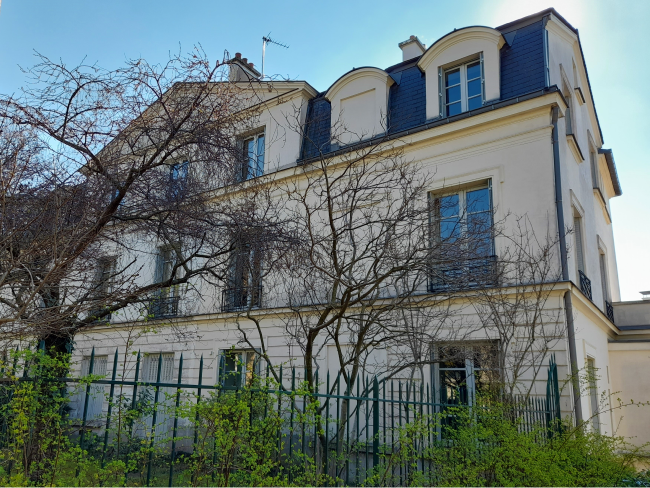
The Chateau des Brouillards. © Pat Hallam
By 1920 the main house was a ruin. It was saved from demolition and remained in the Casadesus family for 70 years. Most recently, in 2002, the house was bought and restored yet again, by a Belgian jeans manufacturer who, in turn, resold it in 2012. You can catch a glimpse of the garden through the main gates on the corner of Rue de l’Abreuvoir; sadly, no goats graze there today.

The garden of the Chateau des Brouillards. © Pat Hallam
From here, a short walk up Rue de l’Abreuvoir brings you back to the vineyard and, a few meters up the hill, back into the noisy hubbub of the Place du Tertre.
Lead photo credit : Lapin Agile, © Kristof Verslype at Flickr
More in Au Lapin Agile, Hidden gem, Iconic Artists, Montmartre, Places to see

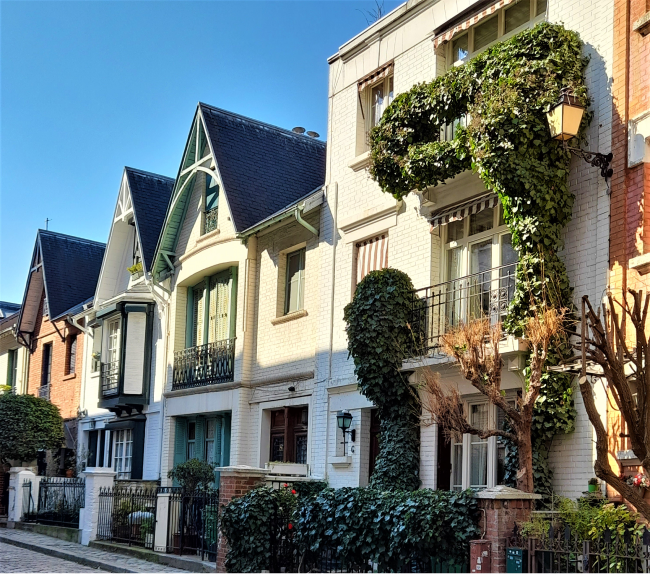

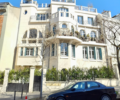
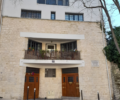


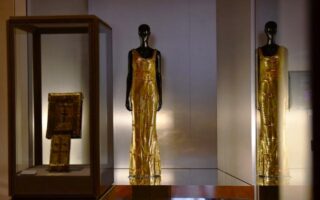
REPLY
REPLY